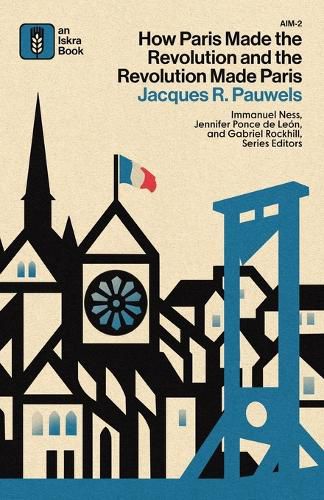Readings Newsletter
Become a Readings Member to make your shopping experience even easier.
Sign in or sign up for free!
You’re not far away from qualifying for FREE standard shipping within Australia
You’ve qualified for FREE standard shipping within Australia
The cart is loading…






This title is printed to order. This book may have been self-published. If so, we cannot guarantee the quality of the content. In the main most books will have gone through the editing process however some may not. We therefore suggest that you be aware of this before ordering this book. If in doubt check either the author or publisher’s details as we are unable to accept any returns unless they are faulty. Please contact us if you have any questions.
How?Paris?Made?the?Revolution?and?the?Revolution?Made?Paris offers a lucid, street-level account of how the French capital and its people forged one another across a hundred turbulent years. Historian?Jacques?R.?Pauwels traces four great upheavals-1789-99,?1830,?1848, and the Paris Commune of?1871-revealing how artisans, workers, and?sans-culottes first shattered royal power and later clashed with a rising bourgeois order intent on remaking the city in its own image. Each chapter pairs concise narrative with a guided itinerary, allowing readers to walk from Versailles to the Bastille, the Hotel?de?Ville, and the "invisible" Paris of vanished alleys and barricades while grasping the class forces that animated those spaces.
Pauwels argues that Paris did more than host revolution: its geography, policing, and architecture actively produced and contained revolt, culminating in Baron?Haussmann's boulevards-celebrated as modern progress yet engineered to prevent future insurrections. Along the way, he revisits classic questions-why 1789 turned radical, how 1848 gave way to empire, why the Commune still matters-always anchoring analysis in the lived experience of ordinary Parisians and the global currents of anti-imperialist struggle.
Ideal for scholars, students, radical tourists, and general readers alike, How?Paris?Made?the?Revolution re-centers the city's history on the working classes who built-and repeatedly tried to reclaim-"the bourgeois Babylon." It reminds us that the stones of Paris still echo with the promise that another city, and another world, remain possible.
$9.00 standard shipping within Australia
FREE standard shipping within Australia for orders over $100.00
Express & International shipping calculated at checkout
This title is printed to order. This book may have been self-published. If so, we cannot guarantee the quality of the content. In the main most books will have gone through the editing process however some may not. We therefore suggest that you be aware of this before ordering this book. If in doubt check either the author or publisher’s details as we are unable to accept any returns unless they are faulty. Please contact us if you have any questions.
How?Paris?Made?the?Revolution?and?the?Revolution?Made?Paris offers a lucid, street-level account of how the French capital and its people forged one another across a hundred turbulent years. Historian?Jacques?R.?Pauwels traces four great upheavals-1789-99,?1830,?1848, and the Paris Commune of?1871-revealing how artisans, workers, and?sans-culottes first shattered royal power and later clashed with a rising bourgeois order intent on remaking the city in its own image. Each chapter pairs concise narrative with a guided itinerary, allowing readers to walk from Versailles to the Bastille, the Hotel?de?Ville, and the "invisible" Paris of vanished alleys and barricades while grasping the class forces that animated those spaces.
Pauwels argues that Paris did more than host revolution: its geography, policing, and architecture actively produced and contained revolt, culminating in Baron?Haussmann's boulevards-celebrated as modern progress yet engineered to prevent future insurrections. Along the way, he revisits classic questions-why 1789 turned radical, how 1848 gave way to empire, why the Commune still matters-always anchoring analysis in the lived experience of ordinary Parisians and the global currents of anti-imperialist struggle.
Ideal for scholars, students, radical tourists, and general readers alike, How?Paris?Made?the?Revolution re-centers the city's history on the working classes who built-and repeatedly tried to reclaim-"the bourgeois Babylon." It reminds us that the stones of Paris still echo with the promise that another city, and another world, remain possible.